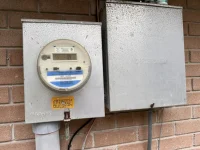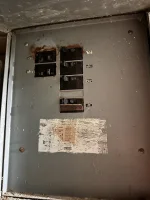Most trades will screw you over because they can. HVAC is the worst, the others are a bit more traceable.
in the last three years I’ve installed two main services in NJ. One to a building that never had any, the other was a change out with a live service coming from the street.
Both cost around $2000 to install about $200-$500 worth of stuff and conductor. One with Siemens panel, the other with an Eaton panel. One pulled a permit and got an inspection, one claimed and lied about it, but the service was already there and connected so it worked out other than that I should have sued them for a discount. Neither had significant numbers of breakers/conductors to refit, which is a time savings, but 5e cost seemed pretty “flat”, as they coukd tell me over the phone the rough cost.
Once you have a panel, the sky’s the limit based upon what they have to go through…. Or it can literally be $5 in parts from home deopt…
A lot of the work and service performed by the trades is simple stuff anyone handy can handle themselves. I can't imagine how much I would have spent over the years if I didn't DIY. I would not attempt a panel replacement, but if I had a newer panel I would certainly add the receptacle myself.


